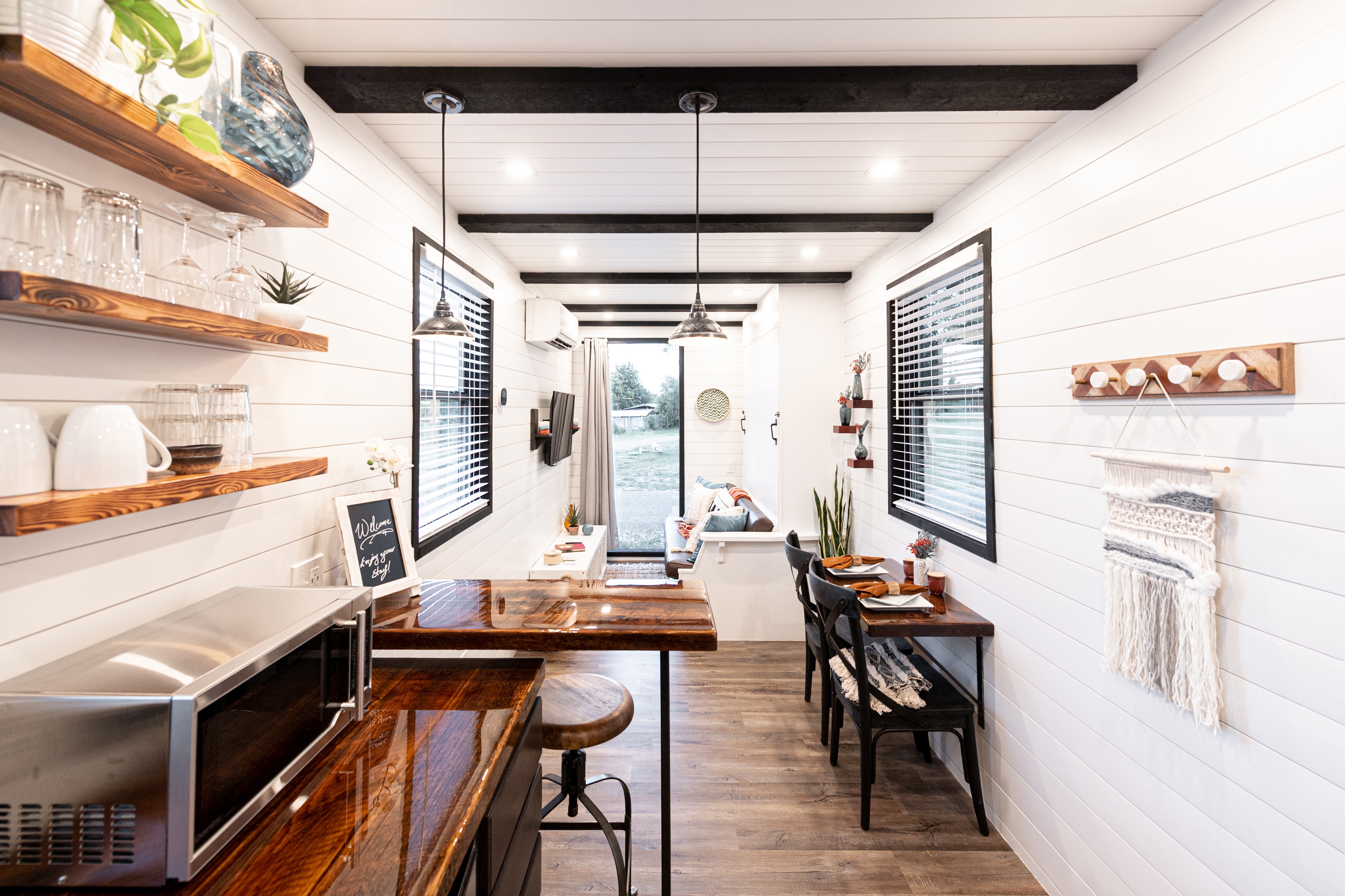02/09/2023
The perfect color for your Tiny House
Choosing the right colors plays a crucial role in designing a space. Especially in small spaces like a Tiny House, colors can have a significant impact on how the space is perceived. Light colors open up a world of possibilities to create a sense of openness and spaciousness.
Using light colors such as white, beige, light gray, and pastel shades can help make a Tiny House appear larger and airier. This is because light tones reflect light, thereby brightening up the space. This creates the impression that the walls are farther apart, providing more overall space.
Creating a sense of openness in a tight space is particularly important to establish a pleasant living atmosphere. Light colors create a visual spaciousness that allows residents to move freely while enjoying a cozy environment. This is especially relevant for a Tiny House, where every square inch must be optimally utilized.
Choosing bright colors is not limited to just the walls but also extends to furniture, accessories, and decorative elements. By incorporating light shades throughout the entire space, a harmonious and cohesive design can be created that enhances the open feeling.
Overall, bright colors offer a wonderful way to overcome the limited dimensions of a Tiny House. They give the space a refreshing lightness and make it appear inviting and spacious. When planning a Tiny House, the choice of bright colors should, therefore, be a central consideration in creating a comfortable and inviting living environment.
Light colors can also have a significant impact on the sense of space and help make limited space appear larger and more open.
Why Light Colors?
Light colors such as white, pastels, and soft beige tones have the ability to reflect light and brighten up the room. This creates the impression that the room has more space than it actually does. In a Tiny House, where every square inch counts, this visual effect is of great importance.
Expanding Space through Light Reflection
Light colors reflect light, whether it's natural daylight or artificial light, making the room appear better illuminated. This creates a friendly and inviting atmosphere typically associated with larger spaces. Particularly in small spaces like a Tiny House, this effect can help minimize feelings of confinement and tightness.
for 3-4 persons.
for 3-4 persons.
for 2 persons.
Creating Space and Openness
The use of light colors on the walls, ceilings, and even in the selection of furniture can create visual continuity. This blurs the boundaries of the space and creates a feeling of space and openness. This is particularly beneficial as it prevents the room from feeling cluttered and oppressive.
While light colors lay the foundation for an open spatial feeling, it doesn't mean you have to forgo color entirely. You can add accents by incorporating small areas with bolder colors or patterns. A colorful cushion, a patterned rug, or decorative elements can add visual interest without overwhelming the space.
Color Design Tips for a Tiny House
- Monochromatic Palette: Use different shades of the same color to create a cohesive yet varied atmosphere.
- Natural Colors: Beige, cream, and soft earth tones give the space a calming touch and make it appear larger.
- Ceiling and Floor: Use light colors for ceilings and floors to emphasize the vertical and horizontal expansion of the room.
- Large Mirrors: Place large mirrors opposite windows or in strategic locations to reflect light and open up the space.
- Light Sources: Utilize various light sources to accentuate the light color scheme and further brighten the space.
Choosing light colors for your Tiny House's design can have a significant impact on the perception of space. By using light tones that reflect light and brighten the room, you can use a visual trick to make the limited space appear more open and inviting. Remember that combining them with strategically placed accents can liven up the space without compromising the sense of openness.
Choosing the Perfect Color for Your Home: Tips for Selecting the Right Color
Selecting the right colors plays a crucial role in room design. Especially in small spaces like a Tiny House, colors can have a significant impact on how the space is perceived. Light colors offer a world of possibilities for creating an open and spacious feeling.
Using light colors such as white, beige, light gray, and pastels can help a Tiny House appear larger and airier. This is because light shades reflect light and, as a result, brighten the room. It creates the impression that the walls are farther apart, giving the overall space a larger feel.
Creating an open feeling in a tight space is particularly important for establishing a comfortable living atmosphere. Light colors provide a visual sense of space, allowing residents to move freely while enjoying a cozy environment. This is especially relevant for a Tiny House, where every square inch must be optimally used.
The choice of light colors isn't limited to just the walls; it also extends to furniture, accessories, and decorative elements. By incorporating light shades throughout the entire space, you can create a harmonious and cohesive design that enhances the open feeling.
In total, light colors offer a wonderful way to overcome the limited dimensions of a Tiny House. They impart a refreshing lightness to the space and make it inviting and spacious. When planning a Tiny House, the choice of light colors should be a central consideration to create a comfortable and inviting living environment.
Light colors can also have a significant impact on the perception of space and help make the limited space appear larger and more open.





